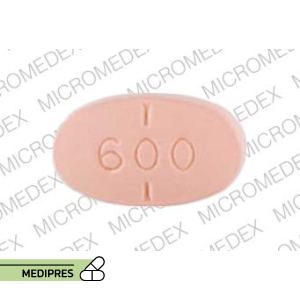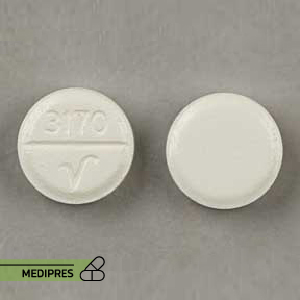
Exforge HCT
23 June, 2023
Fenortho
23 June, 2023Fenoprofen Capsules
Category: F
Description
Generic name:
Fenoprofen
Drug class:
Nonsteroidal anti-inflammatory drug (NSAID), propionic acid derivative
Dosage form:
Capsules: 200 mg, 300 mg
Route of administration:
Oral
Dose:
- Osteoarthritis/Rheumatoid arthritis: 300–600 mg orally every 6–8 hours, not to exceed 2.4 g/day
- Acute pain: 400–600 mg every 4–6 hours as needed (max 2.4 g/day)
- Primary dysmenorrhea: 600 mg initially, then 200–400 mg every 4–6 hours (max 2.4 g/day)
- Elderly or renal impairment: use lowest effective dose; adjust based on tolerance
Mechanism of action:
Inhibits cyclooxygenase-1 and cyclooxygenase-2 (COX-1 and COX-2), reducing prostaglandin synthesis to produce anti-inflammatory, analgesic, and antipyretic effects.
Drug usage cases:
- Osteoarthritis
- Rheumatoid arthritis
- Ankylosing spondylitis
- Primary dysmenorrhea
- Acute musculoskeletal pain
- Off-label: tendonitis, bursitis, gout flares, headache, dental pain
Drug contraindications:
- Hypersensitivity to fenoprofen or other NSAIDs
- Aspirin- or NSAID-induced asthma, urticaria, or allergic reactions
- Active peptic ulcer disease or gastrointestinal bleeding
- Severe heart failure
- Severe hepatic or renal impairment
- Perioperative pain in the setting of coronary artery bypass graft (CABG) surgery
- History of gastrointestinal perforation or ulceration related to previous NSAID therapy
Side effects:
- Gastrointestinal: nausea, vomiting, dyspepsia, abdominal pain, diarrhea, constipation, gastric ulceration, GI bleeding
- Cardiovascular: hypertension, edema, heart failure exacerbation, increased risk of myocardial infarction and stroke
- Renal: acute renal failure, elevated blood urea nitrogen (BUN) and creatinine, interstitial nephritis
- Hepatic: elevated liver enzymes (AST, ALT), hepatitis, jaundice
- CNS: dizziness, headache, drowsiness, lightheadedness
- Hematologic: anemia, thrombocytopenia, prolonged bleeding time
- Hypersensitivity: rash, pruritus, angioedema, anaphylaxis
- Dermatologic: photosensitivity, Stevens-Johnson syndrome, toxic epidermal necrolysis
Warnings:
- Cardiovascular thrombotic events: may increase risk of MI and stroke; use lowest effective dose for shortest duration
- Gastrointestinal toxicity: risk of ulceration, bleeding, perforation—monitor for GI symptoms
- Renal toxicity and hyperkalemia: monitor renal function and electrolytes in long-term use
- Hepatic effects: monitor liver function tests during prolonged therapy
- Hypersensitivity reactions: discontinue immediately if signs of allergic reaction occur
- Fluid retention/edema: use with caution in patients with fluid overload or heart failure
- Masked signs of infection: NSAIDs may hide fever and inflammation
- Photosensitivity: advise sun protection
Use during pregnancy or breastfeeding:
First and second trimesters: Category C. May cause fetal harm in animal studies; use only if benefits justify risks. Third trimester: Category D. Risk of premature closure of ductus arteriosus, pulmonary hypertension, renal dysfunction, and bleeding in fetus/neonate; avoid NSAIDs. Breastfeeding: Excreted in breast milk. Potential for adverse effects in nursing infant; use lowest effective dose and monitor infant for GI and renal adverse reactions.



